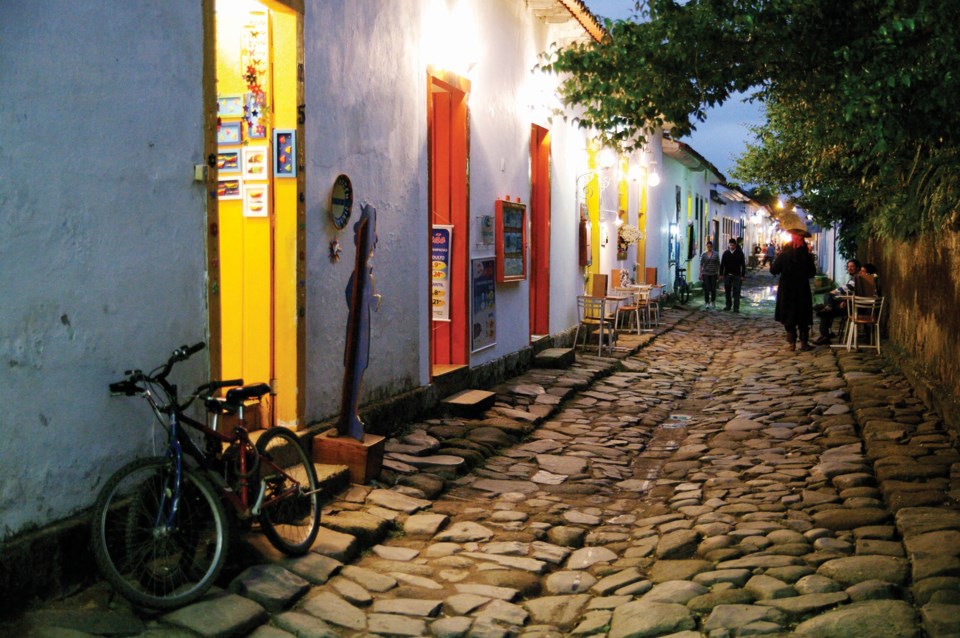About 250 kilometres west of Rio de Janeiro, the coastal hamlet of Paraty (pronounced “Para-chee”) was founded almost as soon as the first Portuguese navigators reached Brazil at the start of the 16th century, springing up on the edge of a bay that provided them with a perfect natural harbour.
Paraty grew on the shipping of gold from mines in the interior. In the 18th century, after the gold was exhausted, it made money from exporting coffee. When a new railway line made rapidly industrializing Rio a more convenient port, Paraty was forgotten, and thus accidentally preserved as the prettiest colonial town imaginable.
Rediscovered in the 1970s and now a UNESCO World Heritage site, Paraty is a seaside grid of uneven, stone-paved streets between white-washed one- and two-storey stone houses with terra cotta roofs, drenched in gaudy bougainvillea, dwarfed by feathery palms, and with gardens home to monkeys and hummingbirds.
A good road connects Paraty with Rio, but no cars are permitted in the old town’s streets and there’s just the occasional clip-clop and rattle of horse carts to disturb the peace. If you want to have your luggage brought from the bus station, you’ll need to hire a man with a wheelbarrow.
There are plenty of small hotels in the new town, where the frequent luxury buses from Rio arrive, but it’s essential to stay in one of the old town’s pousadas – hotels and guesthouses in the ancient mansions themselves – with a variety of choice, price and level of comfort, easily found by walking around on foot. Indeed there isn’t much need to plan, except perhaps during the town’s literary festival in August or during Rio’s carnival, 40 days before Easter.
At the friendly, modestly priced and efficiently run Pousada Arte Colonial, with only a handful of elegant rooms inside its thick stone walls, the day begins with an ample breakfast of warm bread, fresh fruit and freshly baked cake. You’re already staying in one of the sights, and the rest are at your doorstep.
Random walking brings vistas of white-washed walls, with each property painting its window frames a different bright colour from those of its neighbours. Since Paraty now survives on tourism, inevitably bars, restaurants, gift shops and cafés now occupy many of the old buildings, although the trend is towards discretion and the quality is, for the most part, modestly upmarket. Once you’ve sat down to coffee and cake in the tasteful, woody interior of the Café Pingado, with views of a crossroads, there can seem little reason to move further.
But there are tiny 18th-century churches to investigate, a fort above the town with sweeping sea views, and century-old schooners jostling each other at the long wooden dock. Some have a pleasingly piratical air and all can be booked either for private use or as part of a five-hour, four-stop cruise to islands with perfect, white-sand, palm-fringed beaches where you can swim in waters thick with curious fish.
For more information on Paraty, visit the Paraty, Tourism and Ecology website at www.paraty.com.br
For information on travel in Brazil, see the Brazilian Tourism Office website at www.visitbrasil.com
– More stories at www.culturelocker.com



